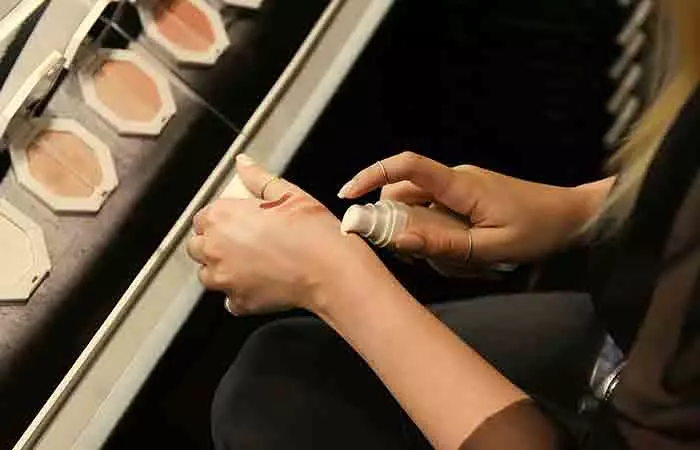How to Choose the Right Foundation Shade: A Complete Guide for Flawless Skin - saimaislam0/blog1 GitHub Wiki
Finding the ideal foundation shade can be transformative for your overall makeup look. The right foundation acts as a seamless canvas for the rest of your makeup, enhancing your natural beauty and providing a flawless finish. On the other hand, an ill-matched foundation can look patchy, ashy, or overly orange, drawing attention for all the wrong reasons. Picking the right shade isn’t just about picking what looks good on the shelf; it requires understanding your skin tone, undertone, and personal preferences. Here’s a comprehensive guide to help you master the art of finding your ideal foundation shade.
Understanding Your Skin Tone
Your skin tone refers to the surface color of your skin, which can vary from light to deep. Determining your skin tone is the first step in selecting the right foundation shade. Here are the most common categories:
Fair: Skin that burns easily and rarely tans. Fair tones often have a pink or cool undertone.
Light: Slightly darker than fair, with skin that can burn but may tan lightly. Light tones can have neutral, warm, or cool undertones.
Medium: Tans easily and rarely burns. Medium tones often have warm or golden undertones.
Tan/Olive: Skin with a noticeable golden or olive hue that tans effortlessly.
Deep: Rich, dark skin tones that rarely burn and often have warm or cool undertones.
To identify your skin tone, look at your skin in natural light and assess how it’s classified within the categories above.
Identifying Your Undertone
Your undertone is the subtle hue beneath the surface of your skin that affects your overall complexion. It’s the key to finding a foundation that doesn’t look too pink, yellow, or gray on your skin. Undertones fall into three main categories:
Cool Undertones: Skin with a bluish, red, or pink hue. If your veins appear blue or purple, you likely have a cool undertone.
Warm Undertones: Skin with a golden, yellow, or peachy hue. Greenish veins are a good indicator of warm undertones.
Neutral Undertones: A balanced mix of warm and cool hues. If your veins look blue-green or your skin doesn’t strongly lean pink or yellow, you probably have a neutral undertone.
A quick test to determine your undertone is to hold a piece of gold and silver jewelry against your skin. If gold flatters your skin more, you’re likely warm-toned; if silver looks better, you’re cool-toned. If both suit you equally, you’re neutral-toned.
Testing Foundations Before Buying

It’s essential to test foundation shades before making a purchase. Here’s how to do it:
Swatch Multiple Shades: Select a few shades that seem closest to your skin tone. Apply small swatches on your jawline or inner wrist, where your skin tone is most consistent.
Blend It In: Gently blend the foundation into your skin. The shade that disappears seamlessly is your best match.
Check in Natural Light: Artificial store lighting can distort how a foundation appears on your skin. Step outside or near a window to assess the shade in natural light.
Test Wear Time: If possible, wear the foundation for a few hours to see how it oxidizes and whether it changes color or texture on your skin.
Choosing the Right Formula for Your Skin Type
The perfect foundation isn’t just about the shade; the formula matters too. Foundations come in various finishes and textures that cater to different skin types:
Oily Skin: Opt for matte or oil-free foundations that control shine and prevent greasiness. Powder or liquid matte foundations work well for this skin type.
Dry Skin: Look for hydrating or dewy foundations that provide moisture and a radiant finish. Cream or liquid formulas are ideal.
Combination Skin: Choose a versatile foundation that balances the dry and oily areas of your face. A satin-finish foundation works well.
Sensitive Skin: Stick to foundations labeled as hypoallergenic or non-comedogenic to avoid irritation.
Matching your foundation formula to your skin type ensures a comfortable, long-lasting application.
Common Mistakes to Avoid
When selecting a foundation, it’s easy to make errors that lead to an unnatural finish. Here are some common mistakes and how to avoid them:
Testing on the Wrong Area: Swatching foundation on your hand or neck may not give an accurate match. Your face is the best place to test.
Ignoring Seasonal Changes: Your skin tone can change with the seasons. Keep a lighter shade for winter and a slightly darker one for summer.
Skipping Primer: A good primer can make your foundation apply more smoothly and last longer. Choose one suited to your skin type.
Choosing Based Solely on Bottle Appearance: Shades can look deceiving in the bottle. Always test before committing.
Overlooking Undertones: A mismatch in undertones can make even a well-matched shade look off.
# Tips for a Flawless Foundation Application
Once you’ve found your perfect shade, applying it correctly is equally important. Here are some tips for a smooth, natural finish:
Prep Your Skin: Cleanse, exfoliate, and moisturize your skin to create a smooth canvas. Use a primer for extra longevity.
Use the Right Tools: Choose tools that suit your desired finish. A sponge gives a dewy look, while a brush offers more coverage.
Blend Well: Blend foundation outward from the center of your face to avoid harsh lines or patches.
Set with Powder: Use a translucent setting powder to lock your foundation in place and reduce shine.
Finish with Setting Spray: A setting spray helps keep your foundation looking fresh all day.
Customizing Your Foundation Shade
for more information:https://magictouch2004.blogspot.com/